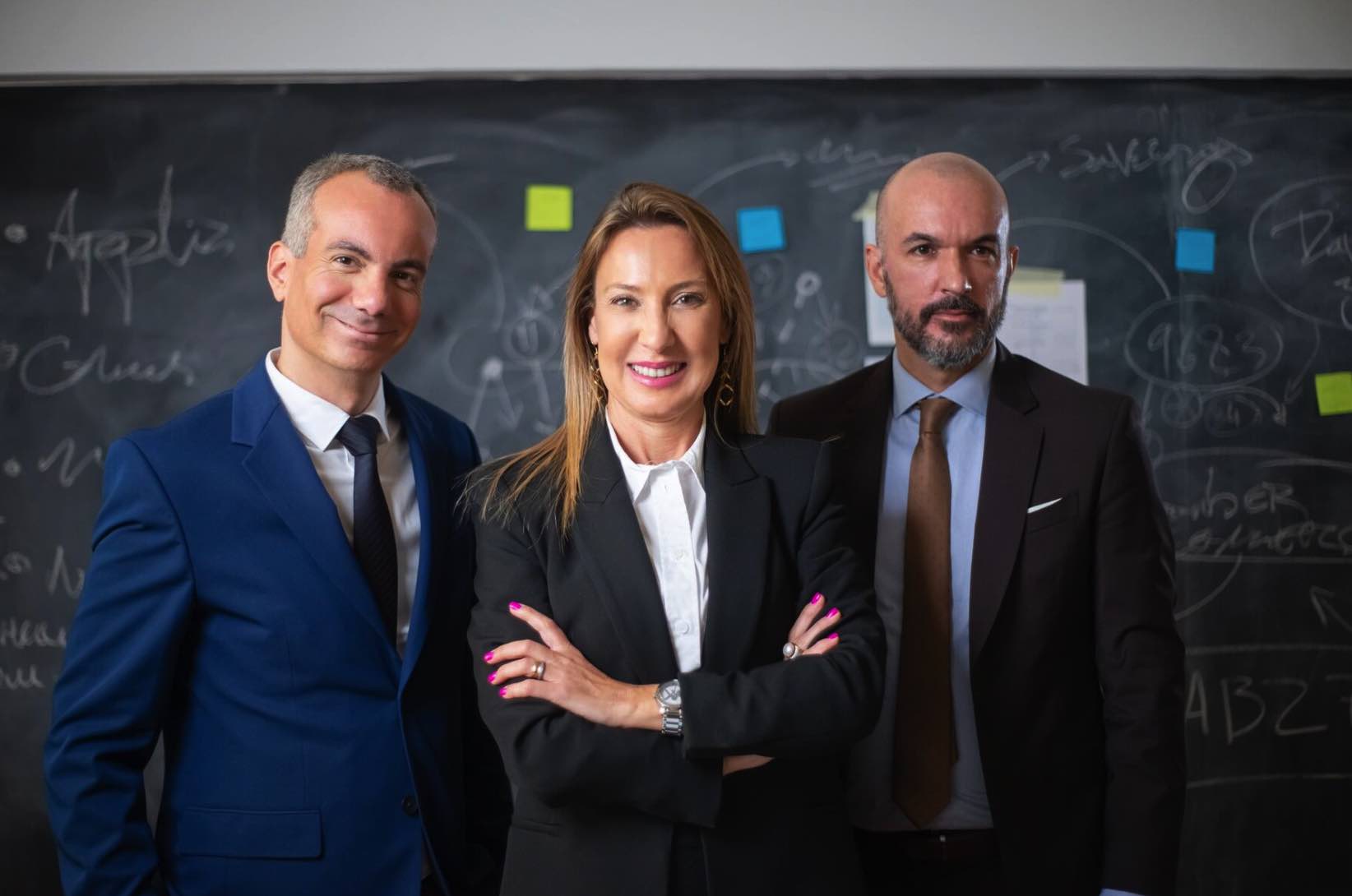
Become an accredited translation service provider with an ISO 18587 certification
Machine translations (MT) save agencies and their clients significant time. Yet these translations must still be edited carefully. In order to guarantee a high quality, a translation agency can become certified with the ISO 18587 standard. This creates transparency for clients and an advantage over the competition.
The quality of artificial intelligence is improving steadily. Google Translate and DeepL have become household words and common in-house tools for companies. As a translation agency, you use professional tools to process texts automatically. Yet a text translated by a computer can rarely be presented to the client as is. The document must be given over to post-editing.
DIN EN ISO 18587 certification improves the efficiency of procedures for machine translation (MT) and confirms your competence as a translation service provider.
Post-editing requires quality assurance
These days, the quality of the post-production of texts comprises a large part of the value of a translation. Computers offer up the basis, but in the end it is the knowledge and experience of trained employees that results in a high-grade translation. This process that goes into this work is often opaque to clients. They see the finished product and have to trust that the translation satisfies the most demanding requirements.
Although the DIN ISO 17100 generally outlines the processes in a translation agency, it explicitly excludes post-editing. That means that even when you have an ISO 17100 certification, it is not an appropriate measure of services based on machine translations. This is where the DIN EN ISO 18587 comes into play as a set of standards specifically for machine translation post-editing (MTPE).

What is the ISO 18587 standard?
This certification establishes international standards for post-editing of computer-generated translations. It consists of three core processes:
- Project preparation
- Production
- Follow-up processing
These individual areas are in turn divided into stages that closely reflect practice. While the requirements for project preparation follow other ISO standards, the production stages are very specifically adapted to machine translation. At the crux are the following:
- What is the goal of post-editing?
- What requirements are in place for post-editing a machine translation?
- What requirements are in place for editors?
With the answers to these questions, the ISO 18587 guarantees that even at a high volume, the quality of post-editing remains high. This is only possible with the organized processes established by the ISO guidelines.
You can reach us by phone on +41 44 552 66 19 or send an email to Mr. Markus Kukla, head of the certification body. We look forward to hearing from you!
What happens during ISO 18587 certification?
During certification we look at two criteria: the actual post-editing process and the competencies that are present.
- Process orientation is divided into preparation, actual production, and follow-up processing.
- In the case of competencies, we examine the general qualifications of the LSPs, the specialized qualifications of the translating entity, and the professionalism of the service.
That means that, with an ISO 18587 certification, it is not the translations themselves or the editing that are the focus, but the process and the workflow. During the assessment we analyze the following processes, for example:
- Inspecting whether the content of the target language of the MT and the subsequent follow-up processing are suitable.
- Reviewing the end product with respect for the specifications before release to the client.
- Feedback from post-editors on the performance of the MT system.
- Are competencies for post-editing described in the supplier database?
- Is there a specific workflow and project management in place?
- How is feedback communicated?
- Testing text documents for suitability for machine translation.
During the certification process, all necessary processes are analyzed and documented. Then we review if these requirements accord with the ISO standard. If so, we can issue you a certificate.
What happens during ISO 18587 certification?
During certification we look at two criteria: the actual post-editing process and the competencies that are present.
- Process orientation is divided into preparation, actual production, and follow-up processing.
- In the case of competencies, we examine the general qualifications of the LSPs, the specialized qualifications of the translating entity, and the professionalism of the service.
That means that, with an ISO 18587 certification, it is not the translations themselves or the editing that are the focus, but the process and the workflow. During the assessment we analyze the following processes, for example:
- Inspecting whether the content of the target language of the MT and the subsequent follow-up processing are suitable.
- Reviewing the end product with respect for the specifications before release to the client.
- Feedback from post-editors on the performance of the MT system.
- Are competencies for post-editing described in the supplier database?
- Is there a specific workflow and project management in place?
- How is feedback communicated?
- Testing text documents for suitability for machine translation.
During the certification process, all necessary processes are analyzed and documented. Then we review if these requirements accord with the ISO standard. If so, we can issue you a certificate.

You can reach us by phone on +41 44 552 66 19 or send an email to Mr. Markus Kukla, head of the certification body. We look forward to hearing from you!
Project management under a magnifying glass
In order to evaluate how post-editing proceeds, we look at project management during a certification audit. For the ISO 18587 certificate, the following aspects are particularly significant:
- The conveying of the most important requirements and project specifications during the pre-production process
- Following processes and specifications during the entire production
- Monitoring the preparation process for the translation projects
- Allocating one or more competent translators for the translation projects
- Assigning one or more competent editors
- Disseminating information and issuing instructions in connection with the order
- Supervising to ensure the agreed-up timeframe and deadline are adhered to
- Conveying changes in project specifications, when needed
- Ensuring that the translations and other needs are answered
- Handling follow-up questions
- Monitoring the adherence of the translation service to specifications before the translation is approved and released to the client.
Why does a LSP need ISO DIN 18587 certification?
When you, either as a translation agency or an independent translator, can present an ISO 18587, you have clear advantages over the competition. It proves to clients that your work follows international standards of quality and this has been verified by an independent authority.
The main reasons for an ISO DIN 18587 are:
- Competitive advantage
- Proof of quality
- Transparency for clients
- Improved internal processes
You will thereby raise your profile over competitors who only have internal standards for post-editing. This will increase your value as an LSP. At the same time, you will position yourself as a modern translation service provider on the cutting edge of technology, for the certificate shows you know how to utilize high-tech software and artificial intelligence.

Certified and systematic sales growth!
With an ISO 18587 certificate, which is best bundled with the ISO 17100, you can show that you’re in a position to handle high volumes of translation, quickly and of a qualitatively high value.
You will also experience advantages for your work methods, for when you adhere to the ISO standard, you are optimizing your processes and workflows and will operate more efficiently. This saves you time and money.
Large companies demand international standards
Many large and international companies publicly tender translation jobs. They swear by LSPs who can translate a large volume of machine-generated translations. Here, time is as important a factor as the objective proof of quality.
With a certification you have a great jump on the competition: The standard of DIN EN ISO 18587 is an internationally recognized set of guidelines for the certification of LSPs for machine translation (MT) and post-editing.
Fast and professional certification
We regard it as our duty to certify your service within a short timeframe. As a recognized Swiss certification authority for language service providers, we follow the guidelines of international audits for the ISO standard. Within the framework of the certification, we will meet with you to analyze the processes and procedures already in place. If we do detect small deviations from the ISO regulations, these can be improved. This part of the audit will then be repeated before the certification.
If you pass the certification process, you will receive an official certificate from us. This declares you certified with a certification number and the date as well as the period of validity. You can then advertise the certificate with the logo on your website and printed material.
Don’t wait until your competition is certified – start the process today. We will gladly advise you about which prerequisites must be fulfilled and how the audit proceeds in detail.
You can reach us by phone at +41 44 552 66 19 or send an email to Markus Kukla, Head Certification Authority. We’re happy to accommodate you!
ISO 18587 certification can also be combined through LinquaCert with audits for ISO 9001 and/or ISO 17100.

Where can I find in-depth information about DIN EN ISO 17100 and DIN EN ISO 9001?
In contrast to DIN EN ISO 9001, the ISO 18587 does not claim to represent a complete management system. You can find a comparison of the coverage of DIN EN ISO 9001 and DIN EN ISO 18587 in our ebook, “Systematic translation with ISO 17100.”
As a separate certification standard, ISO 18587 defines the requirements for machine translation.
The content maps out the process orientation (project preparation, production and follow-up processing), as ISO 17100 does for translation services. Post-editors’ competence, qualifications and professionalism as well as the use of MT must comply with stringent demands.
ISO 18587 is carried out by LinquaCert in combination with audits according to ISO 9001 and/or ISO 17100. Translation service providers aspiring to become ISO 18587 certified should integrate relevant considerations relating to this standard into their existing process management:
- Amending the specialist fields and competencies of the post-editors in the vendor database
- Mapping out the post-editing workflows in the project management tool
- Developing and implementing any procedures required according to ISO 18587
- Systematising communication chains for post-editor feedback
- Testing text types and language combinations using various MT tools
